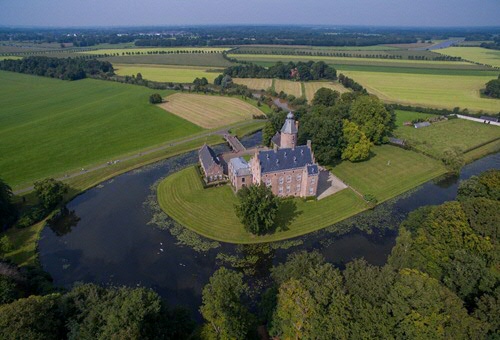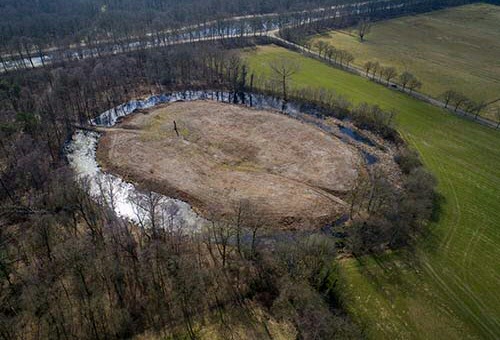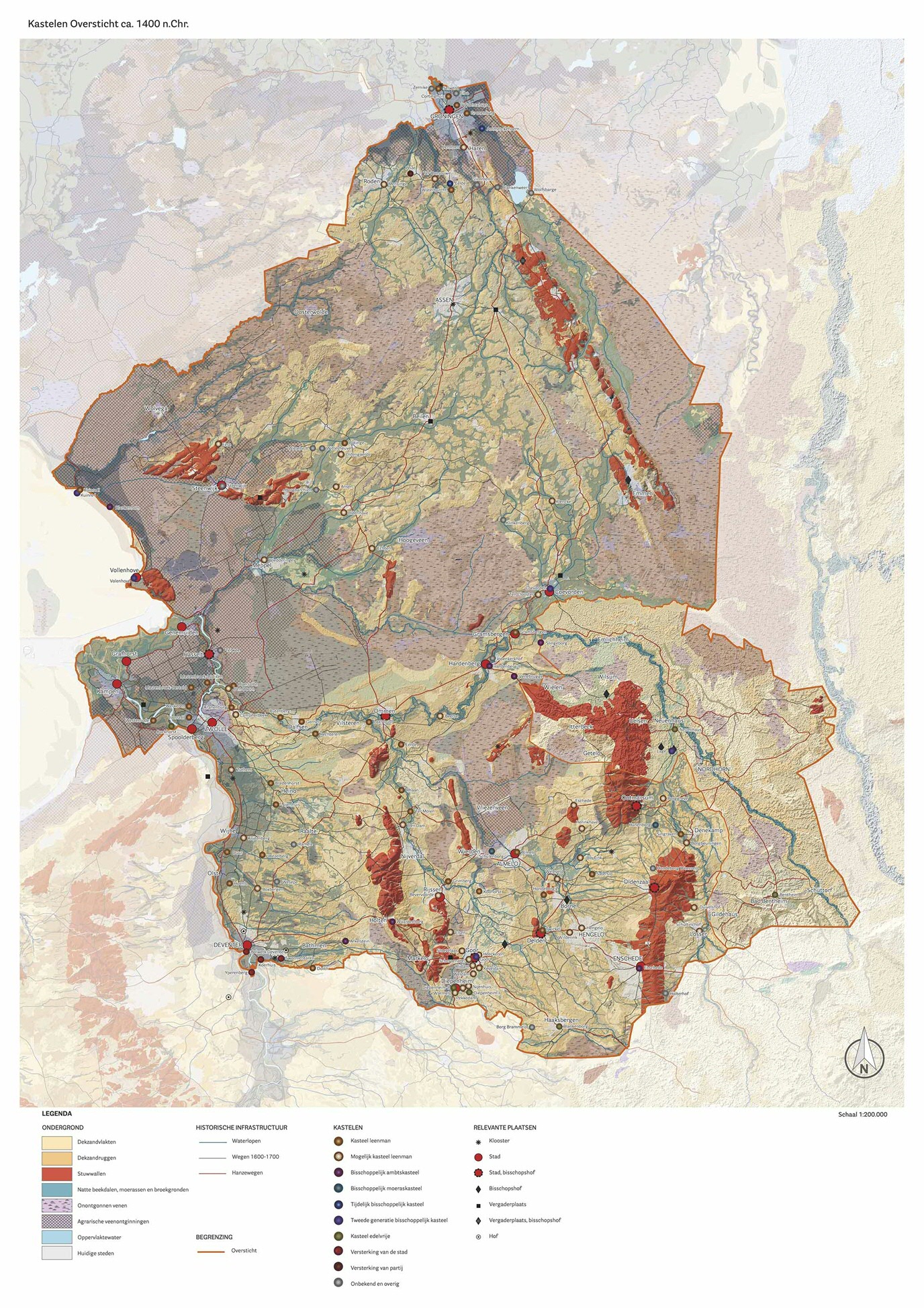The ‘reconstruction’ of the many former castles of Drenthe and Overijssel
Visitors to Overijssel and Drenthe would find it hard to believe that in the Middle Ages, the landscape in this region was dotted with dozens of castles. Evidence of around 134 citadels, noble homes and fortifications in this area has been found, as shown in PhD research by archaeologist and landscape historian Diana Spiekhout. Until recently, this rich past was an almost unknown chapter of Dutch history. Spiekhout’s extensive research offers an entirely new overview of castles in the Low Countries. Spiekhout will obtain her PhD from the University of Groningen on 12 October.
The Oversticht, as the region was called at the time, belonged to the territory of the Bishop of Utrecht. Nobody was allowed to build any castles there without his or the King’s permission;reality, however, was different. At times when the Bishop’s authority weakened, nobles would seize the opportunity to assert their dominance and raise their status by erecting a citadel. This is how the castle landscape of the Oversticht region emerged between 1050 and 1450. Spiekhout’s description also tells the story of quarrelling bishops and long-forgotten power struggles.

‘Castles in the sky’
People generally have no idea which castles and convents used to stand in their regions, explains Spiekhout. ‘It is a lost world that is hard to imagine. Remnants are often only visible from above. That’s why I like to refer to them as castles in the sky.’ During the dry summers of the last few years, Spiekhout was pleasantly surprised to discover that more traces of structures had become visible from the air. The drought revealed other patterns and vestiges in the soil.
New outlook on castles
By studying the castles based on their construction history, location in the landscape and the society that they were a part of, Spiekhout has created a reconstruction of castle development between 1050 and 1450. This is the first study of its size to be conducted in Europe that focuses on the development of castles from the point of view of three different areas of expertise (archaeology, landscape history and political history). This new research method has given castle research a boost and has yielded surprising results that are changing the outlook on castles in the Low Countries. Spiekhout: ‘When people hear the word castle, most would imagine a large structure with a moat, also known as the inner bailey. But that was only part of it. The surrounding area featured extensive, complex systems of multiple ramparts and moats.’

Castles in the wilderness
Spiekhout discovered that builders had specific preferences for locations, functions and forms depending on the era. For example, the oldest castles in the Oversticht region – the episcopal fortifications of Hunenborg and Schulenborg in the province of Twente – were located in a remote and empty stretch of wilderness. Both were abandoned in the first quarter of the thirteenth century, when the Bishop preferred to build fortifications at important strategic intersections (roads and waterways), such as the one at Coevorden. From 1350, he even had the borders of the Oversticht closed off with castles and long lines of defensive works known as landwehrs.
Mark on the surrounding area
Nobles used castles in another way, namely as a central point for expanding their power, rights and property. In doing so, these castle lords also shaped the landscape. ‘The residents of castle Diepenheim, for example, definitely left their mark on the wide area surrounding the landscape,’ says Spiekhout. ‘They commissioned the building of a church, got involved in land reclamation, owned many farms and employed special castle soldiers who moved to the area surrounding the castle. Even today, traces are still visible because the houses in which the soldiers lived have become wonderful country estates.’
More information and contact
- Diana Spiekhout, d.spiekhout@friesmuseum.nl
- supervisor Professor Theo Spek

| Last modified: | 07 October 2020 2.16 p.m. |
More news
-
26 August 2025
Free rein for the crypto coin
Canadian-Dutch political economist Malcolm Campbell-Verduyn is fascinated by cryptocurrencies. It is full steam ahead under American President Donald Trump, he says. At the same time, the economist himself was involved in the crypto coin Ada as an...
-
17 July 2025
Veni-grants for eleven UG researchers
The Dutch Research Council (NWO) has awarded a Veni grant of up to €320,000 each to eleven researchers of the University of Groningen and the UMCG: Quentin Changeat, Wen Wu, Femke Cnossen, Stacey Copeland, Bart Danon, Gesa Kübek, Hannah Laurens, Adi...
-
14 July 2025
How the once-dry Mediterranean Sea was filled with water
Using high-resolution landscape evolution models, researchers showed that the Mediterranean Sea began filling long before the Atlantic Ocean breached.
